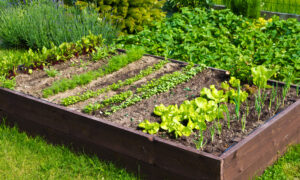In the symphony of everyday life, the food we consume plays a pivotal role in defining our health, happiness, and financial well-being. Amidst the bustling aisles of supermarkets and the endless parade of food trends lies a fundamental truth: the art of cooking nutritious, flavor-packed meals while adhering to a budget is not just a skill but a necessity for most.
The relevance of this approach extends far beyond mere cost-cutting. It’s a harmonious blend of financial prudence, nutritional wisdom, and environmental stewardship. At its core, budget-friendly cooking is about making informed choices—selecting ingredients that offer the highest nutritional value for their cost and preparing meals that nourish both the body and soul without draining the wallet.
1. Financial Empowerment Through the Kitchen:
Cooking within a budget is a powerful tool for financial empowerment. It’s about maximizing the utility of each dollar spent. The economic aspect of budget-friendly cooking involves more than just saving money; it’s about optimizing your resources to enhance your overall quality of life. By mastering the art of economical cooking, you can allocate funds to other important areas of your life, such as education, health, hobbies, or even investments for the future.
In This Article
2. The Health Equation:
Nutrition is the cornerstone of our well-being, and budget-friendly cooking does not imply a compromise on health. In fact, it often leads to more health-conscious choices. By focusing on whole-unprocessed foods and reducing reliance on expensive, pre-packaged meals, you not only cut costs but also gain control over what goes into your body. This mindful approach to cooking and eating can lead to a reduction in processed sugars, unhealthy fats, and excessive sodium—all culprits in modern dietary concerns.
3. An Ode to Environmental Consciousness:
Your food choices have a large environmental impact. Budget-friendly cooking encourages a more sustainable approach to eating. It often involves buying local and seasonal produce, which not only supports local economies but also lessens the carbon footprint associated with long-distance food transportation. Moreover, this style of cooking promotes a reduction in food waste—a significant contributor to global greenhouse gas emissions—by encouraging the creative use of leftovers and proper food storage techniques.
In the following paragraphs, we will embark on a culinary journey. A journey that will teach you the secrets of creating budget-friendly meals that are a feast for the taste buds, a balm for the body, and a boon for your bank account.
Section 1: The Cornerstones of Budget Cooking
Embarking on a journey through the nuanced landscape of budget-friendly cooking, we discover that its essence is captured in three pivotal elements: a robust understanding of nutrition, astute shopping habits, and the judicious use of flavor-enhancing, cost-effective ingredients.
Smart Shopping: The Art of Value-Driven Purchases
Seasonal Produce: Harnessing Nature’s Bounty
- The secret to economical and nutritious shopping lies in aligning your grocery list with nature’s calendar. Fruits and vegetables bought in season not only cost less due to their abundance but also peak in flavor and nutritional value. For instance, strawberries in summer or squash in fall typically have lower price points and superior taste.
- Understanding your local seasonal produce can be as simple as observing trends in grocery stores or visiting farmers’ markets. In winter, root vegetables like carrots and potatoes are not only cheaper but also offer versatile cooking options.
Bulk Buying: Strategizing for Savings
- Purchasing staples like rice, beans, pasta, and nuts in bulk can lead to significant savings. The price per unit often decreases as the quantity increases. For example, buying a 5-pound bag of rice can be significantly cheaper per ounce than smaller packages.
- Smart bulk buying involves focusing on non-perishables or items you use frequently. Consider storage solutions like airtight containers to maintain freshness and extend shelf life.
Sales and Discounts: Navigating with Precision
- Weekly supermarket flyers are goldmines for budget-conscious shoppers. Planning your meals around sales, especially for pricier items like meat or seafood, can lead to substantial savings.
- Utilize coupons and store loyalty programs judiciously. Be cautious of sales that encourage unnecessary purchases, which might lead to overspending and food wastage.
Understanding Nutrition: Merging Budget and Health
Essential Nutrients: A Balanced Approach
- A balanced diet consists of proteins, fats, vitamins, carbohydrates, and minerals. Each component is crucial for your general well-being. For instance, proteins are crucial for muscle repair, while carbohydrates provide energy.
- Affordable protein sources include legumes like lentils and chickpeas. Whole grains such as brown rice and quinoa offer budget-friendly complex carbohydrates. Leafy greens and seasonal vegetables are excellent sources of essential vitamins and minerals.
Cost-Effective Nutrient Sources
- Eggs are an affordable means for obtaining high-quality protein and micronutrients. Canned fish, like sardines and tuna, provide affordable omega-3 fatty acids.
- Frozen vegetables can be a cheaper alternative to fresh produce, with the added advantage of a longer shelf life and retained nutritional value.
Balancing Meals Economically
- Constructing a balanced meal on a budget involves combining protein, carbohydrates, and vegetables. For example, a stir-fry with chicken, bell peppers, and brown rice covers all nutritional bases economically.
- Emphasizing whole foods over processed ones not only boosts health but also ensures more food per dollar spent.
Flavorful, Affordable Ingredients: Culinary Alchemy
Herbs and Spices: The Essence of Flavor
- The transformative power of herbs and spices in elevating a dish cannot be overstated. Bulk buying or growing your own herbs like basil, cilantro, or parsley can be highly cost-effective.
- Spices such as cumin, paprika, and garlic powder can add layers of flavor to foods at a low cost. A small amount goes a long way in terms of flavor.
Pantry Staples: The Framework of Frugal Gourmet
- Essential pantry items include grains, canned goods, and basic oils and vinegars. These items, when used creatively, can form the backbone of countless meals.
- Learning to prepare a variety of dishes from a core set of ingredients ensures variety in your diet without necessitating a vast pantry.
Elevating the Ordinary: Simple yet Sophisticated Twists
- Techniques like roasting or caramelizing can transform simple ingredients into gourmet components. For example, roasting vegetables brings out natural sweetness, adding a new flavor dimension to a budget-friendly ingredient.
- The use of acid, like a squeeze of lemon or a dash of vinegar, can brighten a dish, enhancing its overall flavor profile.
In this chapter, we’ve navigated the intricacies of smart shopping, unraveling the symbiotic relationship between nutrition and budget, and explored how simple, affordable ingredients can be alchemized into extraordinary meals. This foundational knowledge sets the stage for an enriching journey through the art of budget-friendly cooking, where each meal is a testament to culinary ingenuity and economic savvy.
Section 2: Planning Is Key
In the realm of budget-friendly cooking, meticulous planning is similar to the compass that guides a ship through uncharted waters. It involves developing a strategy that encompasses meal planning, crafting a flexible shopping list, and managing kitchen inventory effectively. This section dives deep into these crucial aspects, providing practical, actionable advice to navigate the challenges of economical cooking.
Meal Planning Strategies: The Blueprint of Budget Cooking
1. The Weekly Meal Plan: A Structured Approach
- Begin by setting aside time each week to plan your meals. This step is fundamental in avoiding impulsive food purchases and ensures a well-thought-out diet.
- Start by scanning your pantry and fridge. Check for items that need to be used up and plan meals around them. This approach not only saves money but also reduces food waste.
- Create a balance of meals that ensures dietary variety. For example, if you plan a chicken dish one day, consider a vegetarian option the next. This balance helps in maintaining nutritional diversity and keeps mealtime interesting.
2. Incorporating Flexibility: Adapting to Changes
- While a structured meal plan is essential, flexibility is equally important. Life can be unpredictable, and sometimes, you might not be in the mood for what’s planned, or an unexpected event might change your schedule.
- Build in one or two “flex days” where you can use leftovers or prepare something simple. This flexibility prevents the frustration of strict adherence and reduces food waste.
3. Theme Nights: Simplifying Decision Making
- Implementing theme nights, such as “Meatless Mondays” or “Soup Sundays,” can simplify the meal planning process. These themes can provide a framework, making it easier to decide what to cook.
Creating a Flexible Shopping List: The Art of Tactical Purchasing
1. The Intersection of Inventory and Shopping List
- After establishing your meal plan, create a shopping list that complements what you already have. This step prevents overbuying and ensures you only purchase what is necessary.
- Categorize your shopping list based on the layout of the store (produce, dairy, meats, etc.). This organization saves time and reduces the temptation of unplanned purchases.
2. Budget Allocation: Prioritizing Spending
- Allocate a portion of your budget to stock up on sale items that are non-perishable or can be frozen for later use. This foresight can lead to significant savings over time.
- Always leave a small margin in your budget for unexpected deals or discounts that align with your meal plan.
3. The Digital Advantage: Using Technology to Streamline Shopping
- Utilize grocery apps to keep track of shopping lists and to compare prices. Some apps offer digital coupons and alert you to sales at local stores.
Inventory Management: Minimizing Waste, Maximizing Resources
1. The FIFO Method: First In, First Out
- Using the FIFO principle, organize your cupboard and refrigerator. Put newer goods on the back of the shelf and older items on the front. This system ensures that you use items before they expire.
- Regularly check expiration dates and plan meals around items that are nearing their end.
2. Storage Solutions: Prolonging Freshness
- Invest in good-quality storage containers to keep food fresh longer. For instance, airtight containers for dry goods and proper refrigeration methods for perishables.
- Understand which foods to store where. For example, certain fruits emit gases that can speed up the ripening of nearby produce. Separating these can reduce spoilage.
3. Creative Leftovers: A Second Life for Food
- View leftovers not as remnants but as ingredients for new meals. For instance, roast chicken from dinner can become chicken salad for lunch the next day.
- Regularly schedule a “leftover night” where the goal is to use up what’s in the fridge. This practice not only saves money but also sparks creativity in the kitchen.
In essence, this section underscores the vital importance of planning for budget-friendly cooking. From crafting a versatile meal plan to managing your kitchen inventory with precision, these strategies are the linchpins of a sustainable, economical culinary lifestyle. They empower you to make the most of your resources, minimize waste, and enjoy a variety of nutritious, delicious meals without straining your budget.
Section 3: Case Studies
In this section, we transition from theory to practice, demonstrating the principles of budget-friendly cooking through real-life examples. These case studies not only illustrate the practical application of our strategies but also provide simple, cost-effective recipes that you can replicate in your own kitchen.
Case Study 1: The Versatile Lentil Soup
Overview:
- Lentils are a powerhouse of nutrition, offering an excellent source of protein, fiber, and minerals. They’re also incredibly affordable and versatile. This case study showcases how a basic lentil soup can be both nourishing and budget-friendly.
Ingredients:
- 1 cup dried lentils
- 1 large onion, diced
- 2 carrots, diced
- 2 stalks of celery, diced
- 3 cloves of garlic, minced
- 1 can of diced tomatoes (14 oz)
- 6 cups vegetable broth or water
- 2 teaspoons of cumin
- 1 teaspoon of paprika
- Salt and pepper to taste
- Optional: Spinach or kale for added nutrition
Method:
- Rinse the lentils under cold water.
- In a large pot, sauté onion, carrot, and celery until the onion is semi-transparent.
- Mix in the garlic and continue to sauté for an additional minute.
- Add the lentils, canned tomatoes, broth, cumin, and paprika. Wait for the mixture to begin boiling.
- Lower the temperature setting, cover the pot, and continue to simmer until the lentils are tenderized (30 minutes).
- Season with salt and pepper. For an extra nutritional punch, stir in spinach or kale at the end and cook until wilted.
- Serve hot. This soup can be refrigerated for up to a week or frozen for future meals.
Case Study 2: Stir-Fry Magic
Overview:
- Stir-frying is a quick, versatile cooking method ideal for using leftovers in the fridge. This example demonstrates how to create a balanced, flavorful stir-fry that is both cost-effective and nutritious.
Ingredients:
- 2 cups of cooked rice (leftovers are perfect)
- 1 chicken breast, thinly sliced (or any available protein like tofu or shrimp)
- 1 bell pepper, sliced
- 1 cup of broccoli florets
- 1 small onion, sliced
- 2 cloves of garlic, minced
- 2 tablespoons soy sauce
- 1 tablespoon vegetable oil
- Optional: Sesame seeds, green onions, or a drizzle of sesame oil for garnish
Method:
- Warm the oil in a large frypan or wok over high heat.
- Add the chicken (or alternative protein) and stir-fry until cooked through. Remove from the skillet and set aside.
- In the same skillet, add onion, garlic, bell pepper, and broccoli. Stir-fry the fixings until the vegetables are tender but still crispy.
- Add the cooked protein back to the skillet along with the cooked rice.
- Pour in soy sauce and stir everything together, cooking for an additional two to three minutes.
- Garnish the delicious dish with sesame seeds or freshly sliced green onions and a drizzle of sesame oil if desired.
These case studies exemplify the core principles of budget-friendly cooking: using affordable ingredients, minimizing waste, and maximizing nutrition and flavor. Both recipes are adaptable based on what you have on hand, showcasing the flexibility and creativity at the heart of economical culinary practices. By incorporating these types of meals into your repertoire, you can enjoy a diverse, nutritious diet without stretching your budget.

Conclusion: The Journey of Budget-Friendly Culinary Mastery
As we wrap up this segment of our exploration into budget-friendly cooking, we reflect on the valuable insights and strategies that can transform our approach to food and finances. This journey has not only equipped us with practical tools for economical cooking but has also unveiled the profound interplay between nutrition, budget, and flavor.
Summarizing the Key Points
- Smart Shopping: The foundation of budget cooking is laid in the grocery aisles. We learned the importance of shopping for value, focusing on seasonal produce, bulk buying, and making the most of sales and discounts.
- Understanding Nutrition: Budget-friendly cooking doesn’t mean compromising on health. We delved into the art of sourcing key nutrients from affordable ingredients, ensuring our meals are as nourishing as they are cost-effective.
- Flavorful, Affordable Ingredients: Cooking’s magic resides in its ability to transform ordinary supplies into exceptional feasts. We explored how herbs, spices, and pantry staples can elevate our dishes without inflating our budgets.
- Meal Planning and Flexibility: Strategic meal planning and maintaining a flexible shopping list are crucial in minimizing waste and maximizing savings.
- Inventory Management: Effective management of kitchen inventory, from FIFO practices to creative use of leftovers, is essential in ensuring every ingredient is utilized to its fullest potential.
- Real-Life Applications: Through case studies, we saw how these principles come to life in everyday cooking, providing practical, delicious meal options that are kind to our wallets.
Upcoming in the Series
This series is just the beginning. We’ve gathered an intriguing selection of topics to help you improve your budget-friendly cooking skills:
- Smart Shopping for Nutritious Ingredients: A deeper dive into selecting the best ingredients for the best price.
- The Nutritional Building Blocks of Budget Cooking: An extensive discussion on nutrition and how to achieve a balanced diet affordably.
- Flavor First: Techniques to make budget meals delicious, focusing on herbs, spices, and simple condiments.
- Creative Leftovers: Strategies for transforming leftovers into new and exciting dishes.
- Seasonal Cooking on a Budget: How to leverage seasonal produce to your economic and culinary advantage.
- Global Inspirations: Exploring budget-friendly dishes from around the world.
- Budget Cooking for Special Diets: Tailoring your budget-friendly cooking to various dietary needs.
- Family-Friendly Budget Meals: Tips for cooking nutritious, budget-friendly meals for the whole family.
- Advanced Meal Planning and Prep Techniques: Advanced strategies for meal prepping and batch cooking.
- Sustainable Budget Cooking: Emphasizing sustainable practices and minimizing food waste.
- Reader’s Choice: Addressing your questions and featuring reader-submitted recipes.
- The Budget-Friendly Cooking Lifestyle: A concluding piece emphasizing the long-term benefits and joys of cooking on a budget.
Stay tuned in as we continue to uncover the secrets of thrifty cooking., making every meal an opportunity for culinary creativity, financial wisdom, and nutritional richness. Join us on this ongoing journey, where we turn constraints into a canvas for gastronomic artistry.


















